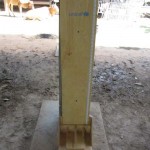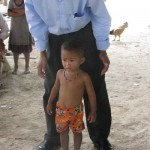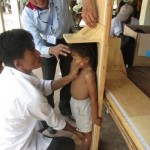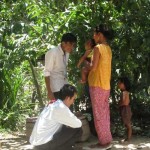Module 8 takes note of other measurements as well. These include height or length (if a child is < 85 cm, measuring their length provides a more accurate measurement) and weight. Since the focus of FoF is to eliminate “hidden hunger”, these measurements provide us with a lot of information about the nutritional status of the women and children we’re meeting. A woman or child may look healthy enough – their bones won’t be visible, or their bellies won’t be swollen (indicators of Marasmus and Kwashiorkor, both of which are types of severe acute malnutrition, or SAM). However, when we have their height/length, weight and age, we can use this information to compare them to healthy individuals of the same age and gender to get a better picture of their health.
There are three indicators that we use:
- Height/length for age – when we know a person’s height and their age, we can compare them to the average height for a healthy individual of the same age and gender. If the person is significantly short for his or her age, we call this stunting. It is a sign of chronic malnutrition.
- Weight for height – we can use an adult’s weight and height to calculate their body mass index, or BMI. A healthy BMI is anywhere from 18.5-24.9. Anything below 18.5 means a person is malnourished. In children, we compare their weight to the weight of a healthy reference child of the same height. If the child is significantly lighter than the reference child, we call this wasting, which indicates acute malnutrition.
- Weight for age – when we know a person’s weight and their age, we can compare them to the average weight for their age and gender group. If the person is light for his or her age, he/she is considered to be underweight.
Here are some pictures from the field.
- The board used to measure the children’s heights
- Positioning the girl’s head properly
- Calling out the weight to another enumerator to write it down
- Reading at eye level is important for accuracy
- A lot of the children were unsure of stepping on the scale
- Head position is important for accuracy
- Mothers are measured first
- Then babies are measured with their mothers
- Growth chart to compare to national averages









